![brindis [beer]](/images/smilies/nuevos2/brindando.gif)
sahaquielz escribió:Entonces hagamos apuestas![brindis [beer]](/images/smilies/nuevos2/brindando.gif)
Yo apuesto a que el precio de Morpheus será de menos de 400€
Menos que el precio de la consola
EDITO:
Ya está para reserva el prototipo 2 de oculus rift a 350$. Envian en Julio
A ver si sony toma nota
![sonrisa [sonrisa]](/images/smilies/nuevos/risa_ani1.gif)
 ... ni siquiera van a necesitar hacer juegos de terror de más de 10 minutos
... ni siquiera van a necesitar hacer juegos de terror de más de 10 minutos ![sonrisa [sonrisa]](/images/smilies/nuevos/risa_ani1.gif) .
.Kuwito escribió:Porra a 200€.
 .
.


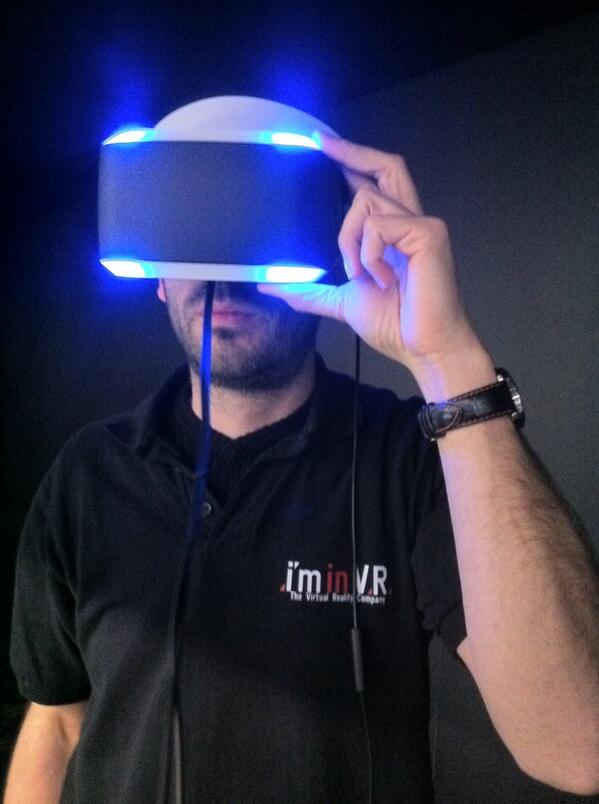
John Carmack escribió:Calibrate PS4 VR expectations: a game that ran 60 fps on PS3 could be done in VR (stereo 1080 MSAA low latency 60 fps) on PS4.
John Carmack escribió:@Dreamscythe That wasn't sniping; I think PS4 is a great platform, sufficient to drive VR. People just need to understand the demands.
John Carmack escribió:@codinghorror oculus' Crystal Cove / DK2 also needs an external camera for position tracking (vs just attitude tracking). Not ideal...
![loco [mad]](/images/smilies/nuevos/miedo.gif)
![loco [mad]](/images/smilies/nuevos/miedo.gif)
![loco [mad]](/images/smilies/nuevos/miedo.gif)
Kuwito escribió:...ya que la diversidad hace que todos salgamos beneficiados.
TheRealTalker escribió:(Today, 07:53 PM)
clip of the dragon VR demo
http://instagram.com/p/lvAmnRCd3o/

![sonrisa [sonrisa]](/images/smilies/nuevos/risa_ani1.gif) .
. Counterfeit escribió:En que se supone que es mejor el oculus DK2 respecto al Morfeo?
InagotablE escribió:Counterfeit escribió:En que se supone que es mejor el oculus DK2 respecto al Morfeo?
Hombre las características técnicas finales de la de Sony no las tenemos, tenemos lo que han ido diciendo en la conferencia y las características finales del DK2 si las tenemos y son 1:1 casi, excepto y que alguien me corrija si me equivoco que en las DK2 siguen teniendo el 3DOF para crear imágenes en 3D y las de Sony me parece que no, repito ME PARECE por que no he escuchado en las de Sony nada de 3D.
Respecto a lo demás, las 2 son en 1080p, las 2 van a 1000Mhz, las 2 son pantallas OLED (Sony supongo que su pantalla sera mejor digo yo) y sus FOV son similares entre 90 a 110º.
Así que a falta de muchísimos mas datos de las de Sony diría que están parejas... SALVO por el hecho de que la combinación de move + cámara de Sony puede dar mejor resultado de "presencia" (la inmersión del juego) que las DK2 que se ayudan de "accesorios" externos no totalmente compatibles al 100% de los juegos.
InagotablE escribió: y que alguien me corrija si me equivoco que en las DK2 siguen teniendo el 3DOF para crear imágenes en 3D y las de Sony me parece que no, repito ME PARECE por que no he escuchado en las de Sony nada de 3D.
El acrónimo 3DoF, significa solo el movimiento en tres dimensiones, pero no incluye la rotación, este acrónimo a veces es tropezado.

InagotablE escribió:Cierto, he mezclado el rastreador de movimiento de cabeza con las 2 pantallas que utiliza para generar el 3D, lo que me refería es que a las de Sony no les he escuchado nada de 3D, por eso decía que me podía equivocar, pero lo lógico es que sean igual 2 pantallas generando el contenido en 3D.
 la ocurus rift solo usa 1 como la Morpheus , las dos funcionan igual , creo que no tienes ni idea del tema
la ocurus rift solo usa 1 como la Morpheus , las dos funcionan igual , creo que no tienes ni idea del tema 
Counterfeit escribió:En que se supone que es mejor el oculus DK2 respecto al Morfeo?

![más risas [+risas]](/images/smilies/nuevos/risa_ani3.gif)
InagotablE escribió:- Pesa más que la DK1 de Rift (dicen que se hace molesto en la zona de la nariz).
caren103 escribió:InagotablE escribió:- Pesa más que la DK1 de Rift (dicen que se hace molesto en la zona de la nariz).
¿Puedes poner la fuente, por favor?
Porque de lo otro no sé, pero de lo que leí ayer, precisamente lo que decían era todo lo contrario: que eran mucho más cómodas las de Sony que las Oculus; que al poco de ponértelas te olvidabas de llevarlas. De hecho, permiten hasta usarlas con gafas con comodidad.
InagotablE escribió:caren103 escribió:InagotablE escribió:- Pesa más que la DK1 de Rift (dicen que se hace molesto en la zona de la nariz).
¿Puedes poner la fuente, por favor?
Porque de lo otro no sé, pero de lo que leí ayer, precisamente lo que decían era todo lo contrario: que eran mucho más cómodas las de Sony que las Oculus; que al poco de ponértelas te olvidabas de llevarlas. De hecho, permiten hasta usarlas con gafas con comodidad.
http://www.realovirtual.com/foro/viewto ... f=3&t=2206
Donde pone: "En cuanto al peso, si el DK2 ya es algo más pesado que el DK1, Morpheus es el más pesado de todos,"
![Ok! [oki]](/images/smilies/net_thumbsup.gif) .
.How does Project Morpheus compare to Oculus Rift?
First impressions of Sony's VR unit.
By Martin Robinson Published Thursday, 20 March 2014
Just under two years ago, John Carmack revealed a virtual reality dream. It was a charmingly sketchy one back then, too, a hastily hung together prototype created by wunderkind Palmer Luckey, but even through the masking tape and ski goggles the future it suggested was intoxicating. The Oculus Rift has become a tangible, tantalising prospect since, and Sony's entry into the market with Project Morpheus, while not exactly validating VR, is a sure sign that the dream is drawing ever closer.
Project Morpheus, perhaps unsurprisingly given the breadth of Sony's expertise and resources, comes strong off the blocks. As an experience it's comparable to Oculus - to the DK2, that is, the most recent iteration of the headset that incorporates Crystal Cove and that opened up pre-orders yesterday - although there are clear points of differentiation.
First is the unit itself. Morpheus is a sleek, handsomely designed piece of kit, and as an object it's certainly more desirable than the Oculus. It's easy to slip on, easy to adjust and, it seems, a little lighter - probably due to the fact that much of the processing is done by a separate box that sits between the headset and the PS4 with an HDMI in and out. This slim piece of kit generates the image for the TV screen that makes for some fascinating gameplay potential - but a little more on that later.
It may be a prototype, but Sony's industrial designers were obviously keen to puff out their chests even at this early stage.
So the headset's well-designed, although it does lag behind the Oculus in some key areas. There's a fair bit more light bleeding into the viewing area, a slim slit just below your field of vision that doesn't seem to be rectifiable by adjusting the optics. The viewing angle, too, is noticeably smaller than the Oculus, even if the difference is minimal - on your visual peripheral there's a clear edge to the image, though it's thankfully slight enough not to break the feeling of immersion.
Specifications
Below are the current specifications of the Project Morpheus prototype. Sony stressed at GDC that they are subject to change:
Component: Processor unit, head-mounted unit
Display Method: LCD
Panel Size: 5 inches
Panel Resolution: 1920×RGB×1080 (960×RGB×1080 per eye)
Field of View: 90 degrees
Sensors: Accelerometer, Gyroscope
Connection interface: HDMI + USB
Function: 3D audio, Social Screen
And what a feeling of immersion it is. Project Morpheus' tracking feels on a par with Oculus, even taking into account the advances brought about by the implementation of Crystal Cove. That's no doubt thanks to the PlayStation Camera's input, and the latency seems impressively low when moving your head. Even better, it allows you full 360-degree movement, letting you look behind you - a factor that's exploited to great effect in Sony London Studio's The Deep.
There is one other setback to Morpheus right now, though it's one that's likely to be remedied throughout the development process. Motion blur is much more pronounced on Morpheus than it is on Oculus' DK2, and image quality is also noticeably not quite on par. Both are running at 1080p, but Morpheus' decision to go with LCD displays rather than the OLED used on Oculus hurts it a little - good thing, then, that Sony's already looking at exploring OLED for its own device.
The experiences themselves, though, show clearer gaps between the two. The Deep, a short, barely interactive experience that casts you under the sea in a diving cage, shows how the ability to look behind you works wonders for Morpheus. First you're sitting just below the waves as shafts of sunlight shear through the water and a boat bobs just above you, giving you some small sense of security. Tropical fish move in through the cage, dancing past your field of vision and moving behind you, where you can track them as they exit into the blue beyond."Project Morpheus' tracking feels on a par with Oculus, even taking into account the advances brought about by the implementation of Crystal Cove."
As the cage is lowered, though, the sense of creeping fear is seriously impressive, the darkening water threatening bigger, more dangerous creatures. And sure enough one emerges from the murkiness, a wonderfully realised great white shark filling your sights before it moves past and back into the darkness. Scanning the waters, trying to anticipate its return, is an anxious experience, and there's some wonderful direction and well-played jump scares as the shark returns to take several bites from your cage.
The Castle demo shows where Morpheus' other advantages come into play. You're in a courtyard, wielding two PlayStation Move controllers that control a pair of in-game hands. With them you can knock around a rag doll knight, or pick up nearby swords to slice off its limbs one by one. You can even reach out and grab separate parts of the knight, holding its head up before severing it in one swift swipe. What's really impressive is how you can move about in that space - the PlayStation Camera allows you a relatively large field of movement, allowing you to walk around a small area of the courtyard. By the time a large dragon sweeps into view before coming crashing down in the courtyard, towering over you, it's hard not to feel totally immersed within the game world.
Field of vision
Unfortunately there are no screenshots available of The Castle or The Deep, so just try to imagine what this would look like wrapped around your face.
So immersed, in fact, that it's easy to forget that other people around you may be watching and, thanks to the separate box that feeds a non-distorted view of what you're seeing onto the television screen, witnessing your actions - something I wished I'd taken into account when I pulled both legs of the rag doll up and over my shoulders and proceeded to pull its crotch into my face. (Jetlag can make you do strange things on a trade show floor.)
The possibilities, though, are mesmerising, especially for anyone taken with asymmetric gameplay. Nintendo Land has already proven the power of giving players different perspectives, and the idea of someone being able to manipulate the space another person is immersed in gives rise to all sorts of devious gameplay ideas.
Morpheus is impressive, then, and as a starting point for Sony's work with virtual reality it's encouraging that it's already achieved a parity of sorts with Oculus, a device that's benefitted from the input of an entire community. There are still reservations, though - The Deep and Castle were both running on PS4, and as relatively non-interactive experiences they still offered an exciting insight into what's possible on Morpheus. More traditional games like Eve Valkyrie and Thief though - the latter sadly wasn't available to play at today's demo - are currently running on PC. Whether they can be replicated on console hardware given the increased resource demands of feeding both eyes individual images at high resolution remains to be seen, and in aligning itself with the PC Oculus has partnered with a platform that's only going to get more powerful by the year, whereas Morpheus is currently working on one that's fixed and could find itself rapidly outgunned by its partner.
What Sony does have, though, is the ecosystem to make virtual reality a viable proposition for the living room - and in its open-armed relationship with indie developers, it's also got a community of its own who will help shape the future of what feels like the most exciting, disruptive technology to come to video games in an age. Regardless of that, though, it's made an accomplished start, and brought the VR dream a significant step closer to becoming a reality for all.
Sony's VR headset is a worthy competitor for the Oculus Rift
By Adi Robertson on March 19, 2014 03:43 pm
Yesterday, Sony suddenly became one of the most important players in virtual reality. At the 2014 Game Developers Conference, it unveiled Project Morpheus, a VR headset for the PlayStation 4. This isn't just a piece of hardware, it's Sony putting its weight behind virtual reality, supporting developers and working to build out an ecosystem for the technology. Today, we got to try out a rough version of that ecosystem, and despite obvious caveats, it's a promising start.
The first thing you notice about the Morpheus headset is that it's surprisingly comfortable. Make no mistake, you'll still look ridiculous, but it's balanced to take the weight off your nose and forehead, with the help of a plastic ring that clamps around the back of your head. It's also easy to take on and off — you essentially support the front with your palms while ratcheting the back shut — although it still takes a little fine-tuning. Sony's had a lot of practice with this, improving on the third generation of non-interactive virtual theaters, and that practice shows. The headset knows when you put it on, and the lenses are great, curving without touching your eyelashes, although they can fog up after a few minutes. I'll withhold final judgment until I've gotten to use Project Morpheus for more than 20 minutes, but I could definitely imagine using it comfortably for stretches of an hour or more.
The obvious, unavoidable point of comparison for Project Morpheus is the Oculus Rift, which Sony now says it hopes to stay in friendly competition with. Morpheus and the Rift use 1080p screens and similar head-tracking technologies, but their strengths and weaknesses vary. Both headsets have gone a long way towards eliminating lag, but Morpheus is still a little blurrier than the newest version of the Rift. Conversely, its superior lenses have actually done better at removing the blocky "screen door" effect, even if the display obviously can't measure up to a 2D counterpart. It's great at blocking out light without feeling stifling, something the Rift still struggles with. Its 90-degree field of view, however, is a definite detriment. The first Oculus Rift developer kit left thin black bars in your peripheral vision, but Project Morpheus has unavoidable, often distracting black half-moons. It's still impressive, but it's got to get a lot better before I'd call it truly immersive.
Sony's peripherals create something of an ecosystem for Morpheus: the PlayStation Move provides motion control, and the console's camera peripheral tracks your head position. It's a fairly versatile system: you can lean over a railing, crouch, or turn completely around. It doesn't, however, seem to track as precisely as the Rift. What you see on the screen can progressively drift away from where you actually feel like you are. My experience with the Move controllers was more scattershot. They're a good idea for virtual reality, giving you a combination of free motion and haptic feedback, but the medieval tech demo meant to showcase them became virtually unplayable when you tried to pick up a sword and saw your disembodied hands shoot across the room.
The actual command center for Project Morpheus is a small set-top box with USB, power, and three HDMI ports, which both connect the headset and split off what your left eye sees in order to mirror it on a television. Actually conveying what's going on inside a headset like the Oculus Rift is extremely difficult, since all you see outside it is a pair of small rounded squares, and Sony has taken a big step forward by adding a clean, non-VR video feed. There's both an element of spectatorship and an opportunity for asymmetrical gameplay, where other players either compete against or cooperate with the person wearing Morpheus.
There's no price or release date on a final version of Project Morpheus, and Sony has confirmed that it's definitely not coming this year. What we've seen, though, is a worthy entrant into the admittedly small head-mounted display market. Sony's hardware improves on the Rift's design, and despite some problems with image quality, it certainly measures up to similar options. For now, what we're really waiting on is a real stable of VR games, beyond tech demos and some adaptations of non-VR titles like Thief. And given its considerable clout with game developers, this will hopefully be an area where Sony really shines.
Counterfeit escribió:Así que este prototipo sale peor parado que el DK2? más les vale ponerse las pilas, que pillen uno de esa gente y le copien todo
Cristofer15 escribió:los 400€ no se los quita nadie creo yo, esperemos que no se suban a la parra
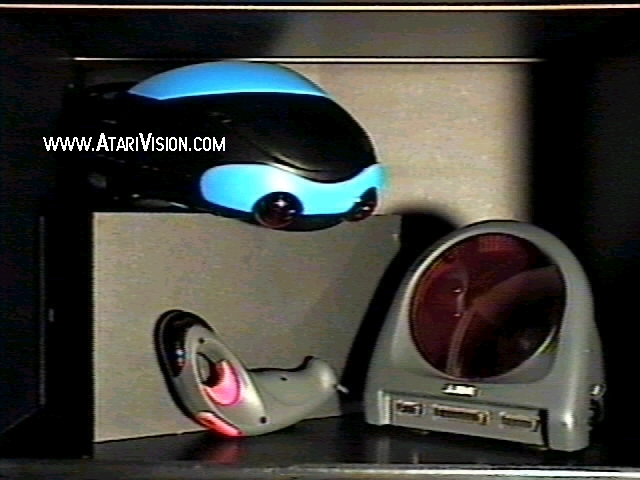
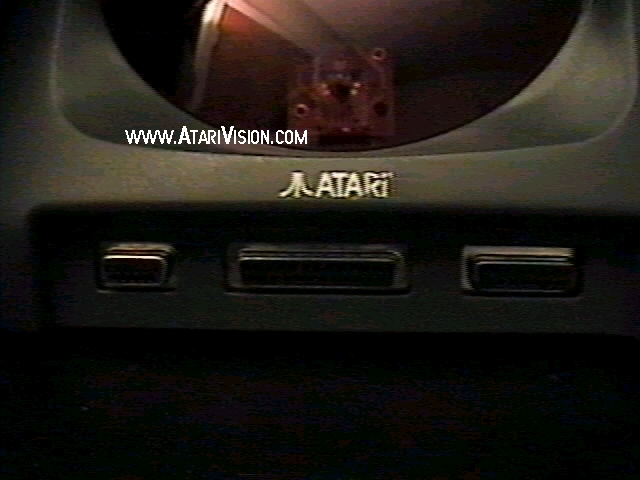
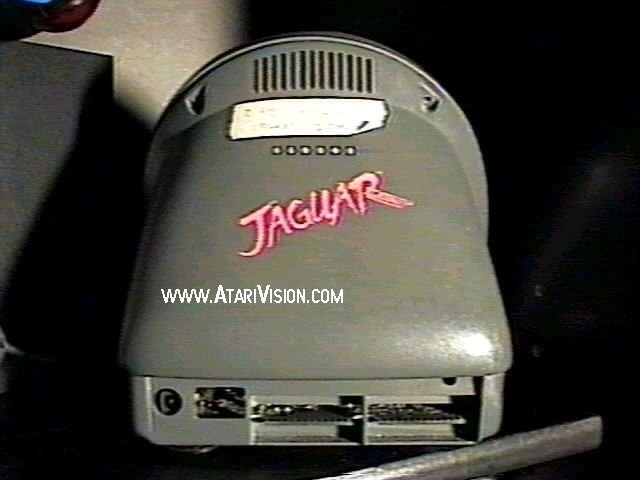
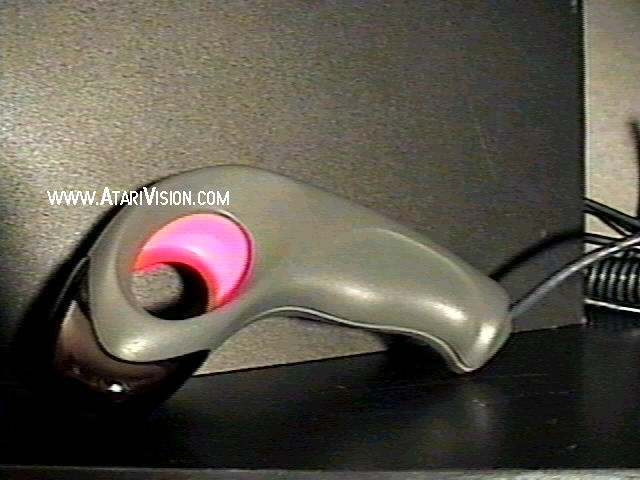
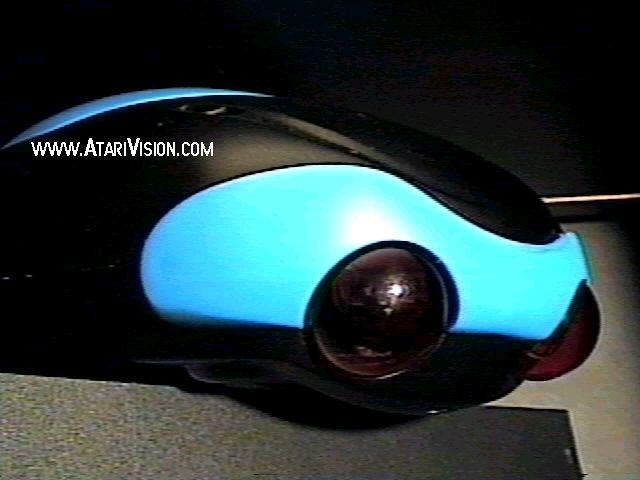


 :
:
Exploring virtual reality on PlayStation 4 with Shuhei Yoshida and Richard Marks (video)
BY Ben Gilbert @RealBenGilbert March 21st, 2014 at 9:00AM
It was 2010 when Sony engineers first explored virtual reality concepts. The idea of a VR headset sprang from another project at the company: PlayStation Move, a wand-like motion controller for the PlayStation 3. Company engineers attached the controller to head-mounted displays, enabling a form of homemade VR via motion and depth tracking. Sony Computer Entertainment Worldwide Studios head Shuhei Yoshida was asked to try these early prototypes, one which put the player into the role of Kratos in God of War 3 and the other a mod of Half-Life 2 where you could lift up and look at your own gun. "That was a totally compelling experience, so I became a believer," Yoshida told us in an interview this week, post-Project Morpheus announcement. "It was a 'wow' moment!"
So, what's Project Morpheus? It's the somewhat silly code name (from the Greek God of Dreams) for the virtual reality headset planned for the PlayStation 4, and Sony unveiled it this week during the 2014 Game Developers Conference in San Francisco. Yoshida himself announced Morpheus, flanked by R&D engineers Richard Marks and Anton Mikhailov who dug into the technical chops behind the prototype headset. The trio chose GDC for an important reason: this is where they can send a rallying cry to game developers. Marks made their call to action clear when he finished his portion of the presentation by saying that this moment, right now, is the beginning of a new field of gaming. "This is the Wild West," he said. And he's right. There are no VR standards (though efforts are being made), no VR game "tropes" yet. The folks making VR games are at the forefront of an unexplored genre, and that's thrilling.
Morpheus is as close to the quality of Oculus VR's latest Rift prototype as anything out there, though it lags behind a bit in a few key areas. Specifically, vision blur, field of view and image quality aren't as refined as the Rift's latest dev kit (read our full hands-on here). Nor is Morpheus up to Sony's standards for the consumer version. Marks acknowledged as much in our interview (seen above), and he also spoke to the hurdles ahead for VR as a medium going mainstream.
As ever, with VR it's about making a product that'll convince people. But what about that whole "putting electronics on your head" issue? That "encumbrance" factor is a concern, Marks admitted -- one that Sony's trying to minimize with the design of the headset, but only so much can be done with existing technology that keeps it within a reasonable consumer price range.
Whereas Oculus has put a firm price on its Dev Kit 2, Sony's not talking cost for this first iteration of Morpheus, and that same silence extends to its particular specs, and eventual consumer release. The prototypes/development kits at GDC are the base level of workable hardware for developers to start developing games. Yoshida's hoping we'll see some of the fruits of those developers' labor by E3 this June -- Morpheus dev kits head out to game developers next month, and the only way to get one currently is to get in touch with Sony directly (Yoshida suggested tweeting at Adam Boyes and Shahid Kamal Ahmad).
Morpheus will inevitably evolve towards a final consumer version. It's just not coming this year -- and that's the closest thing to a release window we've got right now. But we expect Project Morpheus won't remain so mysterious for too long.
Massive Information Leak About Sony’s Morpheus Talks Tech, Price, Games, 2015 Release and Much More
by Giuseppe Nelva on March 20, 2014 8:04 AM 92 @abriael
PS4Rumors
Sony’s Project Morpheus has raised a lot of interest after its unveiling two days ago, and also a lot of rumors. Today a Reddit user going by the name PS4VR posted a large bundle of information citing sources internal to Sony’s development teams that sounds very realistic, but of course should be taken with a rather sizable grain of salt.
While we don’t have any evidence of the legitimacy of the information provided, it’s definitely interesting, and it’d be hard to fathom why someone would decide to write such a gigantic wall of text if there wasn’t any truth to it. It also seems to match pretty well with most information we have about Morpheus.
The only part of the post that seems not to work with what we know is the mention of Driveclub, that according to SCE Worldwide Studio Shuhei Yoshida was tested with virtual reality, but it didn’t really work when he tried it. That said, Yoshida-san’s wording could be interpreted in different ways:
Right now, Evolution Studio is “not working on Morpheus at all,” and is instead putting “all the effort” into finishing the game.
It could easily mean that the VR option could be worked on after release, or by another studio. It’s also very possible that the source of this leak may have outdated information about Driveclub itself.
Below you can read the full post, and make your own mind on whether it’s legit of not. One thing is for sure: it definitely sounds very interesting, and the way it’s written and worded definitely seems to indicate a deep knowledge of the topics involved.
_____________________________________________
Bear with me, I have a lot to share. All I can tell you about my source is that he is the same person who initially leaked months ago that Sony was working on a VR headset and was planning to unveil it at Gamescom last August. He disclosed that information to me well before the PS4 launched.
Sony has very strict NDAs in place. At my sources request, this is a throwaway account. He is very enthusiastic about Morpheus but he is also quite worried that I will accidently share information that leads back to him. As a result, he is okay with me sharing the below information but nothing more. Because of the amount of information he is sharing, he asked to avoid sites which may recieve a legal notice from Sony to compel them to reveal a source prefering less regulated places such as reddit or pastebin. He asked me to not share any information about how I know him, what specifically he does at sony, the dept he works for, or the circumstances behind this leak of information. He also asked me to not share any information about who I am in case people start asking me for more information and I slip up. It’s unlikely that I will be posting from this account again after today unless he explicitly permits me to.
The Launch Window
• Sony hopes to release Morpheus before the end of fiscal year 2014 (which ends on March 31, 2015). However, they are much further along than people realize and were initially targeting a Fall 2014 release. The prototype Sony showed yesterday, as advanced as it is, was fairly close to the one they were planning to debut at Gamescom last august. There were some minor adjustments made to the LED positioning and there is a slightly improved screen in this prototype but the two prototypes were otherwise identical. They decided against showing the prototype last year because they wanted more time to nail down the software and because they didn’t want to take focus off the PS4’s launch.
The Device’s Name
• The final name won’t be Morpheus. The device doesn’t have a name yet but is likely to be named with an evocative action verb akin to Move, Play, Create and Share. According to my source, View (as in Playstation View and PSView ) are two that are often thrown around internally. But he also added that its way too early for them to settle on a name and it may very well might end up being named some other verb like Focus, See, Experience, Imagine, Live, Immerse or something entirely different like Vision all of which he has heard people suggest.
The Target Price
• Sony is internally targeting a price of $250-$299 with a camera bundled, and they are planning to subsidize the cost of the device in order to achieve this price tag. Later in the conversation, he noted some reservations he has about this target price. Sony invested a substantial amount in R&D for this device for the past several years.
The Games (Many Titles in Development)
• Sony’s first party studios are working on some absolutely fantastic VR experiences. The Last of Us, God of War and Drive Club are being built into brand new VR experiences from the ground up. I mentioned that Drive Club was supposed to be a PS+ free game and he told me that Drive Club will be a traditional game but will also have a dedicated VR component with pared back but nevertheless very impressive graphics. According to my source, Sony feels that while these known franchises are what will drive gamers to first make the leap over to VR, entirely unique and engaging experiences are what will demonstrate to gamers what VR offers over traditional gaming. Guerrilla Games is working on a unique first person Adventure RPG built from the ground up for VR and Sucker Punch once they wrapped up work on Infamous started work on something VR related.
The Experiences
• Sony wants to bring VR to the masses by offering up VR experiences that are both revolutionary and very accessible, plug and play and with a very simple to use interface that require absolutely no technical knowledge to set up or use. And they want to launch the device with VR software unlike anything people have ever experienced before. This is a major area of focus for Sony’s R&D and internal development studios.
• There is a lot of amazing software they are keeping under wraps. They even have an interface designed specifically for VR that they are keeping under wraps. Some of the VR software that Sony’s internal teams are working on, (examples he mentioned include virtual tourism through various places and to different eras in human history, space exploration, deep sea exploration and a VR oriented take on PlayStation Home) aren’t really games in the traditional sense and are designed to be immersive VR experiences that have more broad appeal beyond just traditional gamers.
• Sony is also worried about public perception that VR is an isolative antisocial experience. They are working on a collection of asymmetric multiplayer games, some of which are sports, and some of which are entirely new experiences (Note: Nintendo Land is what came to my mind when my source said asymmetric multiplayer, when I asked if this was anything like Nintendo Land, he said that two of the asymmetric games share some elements in common with Mario Chase and Metroid Blast but the others are very unique experiences and VR adds a whole new dimension to them).
• As if the above information didn’t make it clear, he specifically told me that Sony is a huge believer in the possibilities that immersive VR. They’ve long felt that once the technology becomes feasible, VR experiences (games, virtual tourism, edutainment) could be as big an industry as movies and traditional games are today. They want to be at the frontier of this new industry the same way they were with CDs, and with personal music players when they launched the Sony Walkman. They feel that if properly executed, VR will have more mass appeal than any game console in history and with much longer legs (presumably this was a reference to the Wii) because it offers something that simply hasn’t been possible before. Sony feels that without them entering the market with an easy to use, closed box, plug and play VR experience, it will take some time before VR ventures beyond PC enthusiasts and the technically adept. He said that Sony has been investing very heavily in VR in order to make immersive VR accessible to the masses at large.
The Hardware
• The PS4’s internal architecture, the Playstation Camera, and the Dualshock 4 (both the lightbar and touchpad) were designed from the outset with VR in mind. Like the PS1 with CDs, the PS2s with DVDs, the PS3 with Blurays, the PS4 was designed to make VR mainstream. Even the HMZ releases were designed to recoup some of their early R&D costs while improving upon the early headset designs. All VR games will be required to support both the Dualshock 4 controller and the Move Controller. The advantages of doing this include not needing to bundle Move controllers in with the headset and allowing gamers to transition to VR using a controller they are familiar with.
• The Morpheus will not be PC compatible in the near future. Sony needs to recoup the substantial investments they are making with PS4 VR game sales and get hardware costs down before they consider adding PC support. More importantly, Sony feel there are significant advantages to a walled garden (Apple-like) approach when you are introducing a brand new device to the masses. Thanks to the PS4, Sony controls every aspect of their VR experiences, both the software and hardware and their VR software can target one unified set of specifications. Sony plans to leverage this to deliver truly mind blowing and immersive VR experiences that perform smoothly and consistently.
• Sony is positioning the VR headset as sometime quite distinct from the PS4. They want the PS4 to be the place where gamers go for cutting edge mainstream games and the VR+PS4 combo to be the place to go for anyone interested in rich immersive VR experiences even if they don’t have the technical knowledge necessary to get something like the Oculus Rift up and running.
• Sony wants to avoid creating the impression among gamers that the PS4 needs a VR headset to be a worthwhile purchase. This is one reason why they decided against launching the VR headset this year. They want to give the PS4 lots of breathing room, release a rich lineup of dedicated games for it this holiday season and maintain the PS4’s momentum as the go to console for gamers even if they aren’t interested in VR. It sounded like Sony feared that focusing too strongly on VR this early in the PS4′s life could drive away some gamers and hurt their momentum going into the holiday season
• In essence, Sony plans to fully and significantly support two unique and distinct platforms, a dedicated cutting edge gaming console, and a brand new plug and play VR platform that offers unique tailored immersive experiences unlike anything anyone has experienced before. This is partly why Sony is working so hard to bring in more indie developers to their platform, because they feel these indie developers will help them successfully support and nurture both platforms.
• Another reason why Sony decided against launching the device this year is (and the reason they chose to unveil the device at GDC) is because they wanted to get indie developers on board early. They know that a large lineup of captivating VR experiences at launch gives the device the best chance of success, and they are actually positioned to do just that. They have a substantial amount of internal software being developed to launch along the VR headset. But they want indies on board to fill in gaps, offer up unique experiences that didn’t even occur to them, and help ensure a steady stream of VR experiences following the launch.
The Reason for My Source’s Leak
• What seems to have prompted this leak is my sources (and several of his collegue’s) desire to significantly beefup the consumer device well beyond the specs shown in yesterday’s prototype. Sony’s executives are still weighing their options, whether to release something close to the prototype shown yesterday at a very low price, or to further beef up the specifications and launch at a higher price tag. My source worries that Sony might undermine their own initial vision by making compromises to the device’s specs in order to lower costs both to themselves and to the end user. If it turns out that they can deliver an even more immersive experience and the choice was between a $299 1080p 60fps headset vs. a $399 1440p 90fps low persistence headset that does a superior job of achieving presence/immersion, he hopes that Sony opts to take that later option and that VR enthusiasts likewise encourage Sony to favor immersion over cutting costs.
• My source worries that if the number one concern that gamers seem to have regarding this headset is the cost, this will make it more likely for sony to opt for a lower specced and cheaper headset over a more immersive and advanced headset. Sony’s consumer research browses sites like facebook, twitter, reddit and neogaf to get a pulse on how gamers and tech enthusiastic feel and preemptively address areas of concern (it’s not just sony, all major corporations do this per my source). He is worried that comments on these sites will dissuade Sony from opting for the superior and more immersive but more expensive specifications in order to hit some arbitrary price point. If this what most gamers want, then that’s fine, but he feels that most gamers and tech enthusiastics would prefer a more advanced and more immersive headset even if it costs a bit more initially and if he is correct, he wants gamers to communicate this. He also feels it doesn’t make sense in the long term to favor a cheaper less capable screen over a pricier one since the component costs will fall drastically in an year or two anyways and only the enthusiasts will be adopting it early on, even with lots of support like Sony is planning.
• He specifically said he is not especially technical but that he and everyone at Sony that he works with wants the device to be as immersive and create as much a sense of presence as is technically feasible. He said that he doesn’t know if their engineers ultimately feel they would need a 1440p, 90 fps, OLED screen with a much wider FOV in order to create an even greater sense of presence or immersion, but he hopes that if that’s what they conclude, this is the route that Sony opts to take, even if it brings the initial cost of entry to $399 rather than $299. In an year or two, they can substantially reduce that cost. He predicted that Sony’s higher ups will underestimate the demand for this device and there would be shortages for this device at launch akin to the kinds of shortages Wii experienced, so even if Sony launches it for $299, many people will be up paying $499 or more for it on ebay to get their hands on it. He doesn’t think it makes sense to target a lower price in favor of higher quality at launch as the enthusiasts and early adopters would gladly pay a higher price for a superior product and the cost of the components will fall quickly allowing a price cut within the year allowing for a more mass market price.
The PS4’s Technical Capabilities for VR
• He also said that there is a stark difference between what he has seen from internal developers privately vs what gamers think the PS4 is capable of achieving. Software developers tell him that PC hardware is used inefficiently, and is designed to target a wide swath of different possible specs rather than one consistent hardware environment like consoles offer. As a result, there are lots of excellent tricks they can use to maximize the hardware performance and with time, you end up with games like The Last of Us running on such ancient hardware. He says that from what developers tell him, PC software has not come close to being built around high end gpus, it’s instead focused on running on even low-mid range gpus. He tells me that a game built from the ground up to maximally utilize a single high or even mid end cpus and gpu and maximally tweaked to employ ever trick the hardware allows would look vastly superior to anything out today, especially once the developers really get familiar with the hardware, and this is what consoles allow. This is why he says he has seen PS4 exclusives that far surpass any game out today, because they were actually centered to maximally employ the tricks the hardware allows. I asked him about Killzone’s resolution and 30fps limit and he responded that Killzone had to make launch giving little time to tweak it to take advantage of the PS4 hardware but that he has already seen atleast two exclusive PS4 games running at 1080p and a rock solid 60fps that graphically significantly surpass The Dark Sorcerer in engine demo that Sony wowed people with last year.
• From what he tells me, based on what he was shown privately, the PS4 is more than capable of producing beautiful, clean, immersive 1440p 90fps games split into two circles for VR. When I asked him to list some existing games that are comparable to the environments he saw running privately running at a 2560×1440 resolution split across two screens (which I will henceforth refer to as 2x1440p) running at 90fps, he listed that they were equal in quality to The Last of Us, Grand Theft Auto 5, Super Mario Galaxy, Wipeout HD Fury, Pikmin 3 and The Legend of Zelda: Wind Waker HD but added that these environments were rendered at much higher resolutions and with higher resolution textures leading the environments to actually look much crisper and more beautiful than they do in any of those aforementioned games, and they would blow people’s minds if demoed publically running at 2x1440p at 90fps off the PS4 because they truly achieve presence. He further added that obviously, dedicated nonVR games like the ones he has seen privately feature much higher quality graphics, but that from his experiences with VR, that isn’t as important. As long as the environment is clean and crisp at a high resolution and a with a high frame rate, its an incredibly engaging and immersive experience. He also added that just because they use 1440p capable screen doesn’t mean that a developer can’t render their game at 1080p and/or run the game at 60fps instead of 90fps if they wish to crank up graphical details and feel they can do so without breaking immersion, since even a 1080p resolution image rendered on a 1440p capable screen will produce significantly less of a screen door effect than a 1080p resolution image displayed on a 1080p screen.
![más risas [+risas]](/images/smilies/nuevos/risa_ani3.gif)
kurosakicarlos escribió:Cuando estuve en contacto con Oculus Rift en la Gamescom del año pasado comprendí que la verdadera inovación desde que se empezaran a realizar videojuegos en 3D, era la realidad virtual (bien ejecutada claro). Ni 4K, ni HD, ni el 3D en los Televisores o la 3DS, ni mandos con olores o pantallas táctiles. Esto sí es el jodido futuro, marcará un antes y un después y conseguirá lograr la ambientación definitiva para potenciar la experiencia al 200%. Ya no hablo de juegos de terror, sino de contar una historia mucho más cercana y profunda. Y qué leches, utilizar esta tecnología para aplicarla a la educación de nuestros hijos o como apoyo a personas con diversas patologías. Ya os lo adelanto, es el futuro. Por cierto, respecto al precio, espero que no se dispare de los 180€, por los 250€ del Oculus Rift (que lógicamente no podrá realizar la megainversión de Sony).
kurosakicarlos escribió:Por cierto, respecto al precio, espero que no se dispare de los 180€, por los 250€ del Oculus Rift (que lógicamente no podrá realizar la megainversión de Sony).
nanoxxl escribió:kurosakicarlos escribió:Por cierto, respecto al precio, espero que no se dispare de los 180€, por los 250€ del Oculus Rift (que lógicamente no podrá realizar la megainversión de Sony).
la Oculus Rift dk2 sale por 350€ entre impuestos y gastos de envió , yo espero que ronde los 200/250€ la de sony